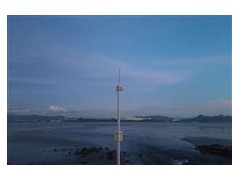The printing industry in Australia and New Zealand has undergone significant change since the last drupa eight years ago, and while these changes have caused many disruptions, those printing companies that have adapted and embraced the challenges and opportunities are experiencing good growth.
In this far-flung land, the key to not just surviving, but thriving in a rapidly changing market is diversification. The commercial printing companies that are seeing the main growth are those that have the foresight to see themselves as communication solution providers that are not limited by the past, offering the market a broad product range that goes beyond the brochures, flyers and business cards of the traditional printing world, and those that incorporate data management are really succeeding.
This is all thanks to digitisation, which has eliminated the old silos of printing, which are now largely gone. Commercial printers can now easily print large-format display work, labels, packaging or clothing, and in Australia and New Zealand, they are doing just that and reaping the rewards.
For example, at Kwik Kopy, one of the two largest printing franchise groups, last year it reversed a decade of modest declines in total sales revenue by encouraging its franchisees to install and offer large-format printing services. The franchisees found that their customers responded enthusiastically to the new services.
Another example is Engine, a large commercial printer, which started printing large format six months ago to serve its existing customers and has seen a response far beyond expectations. There is also Revolution, a regional general commercial printer, which decided to enter the label market, installed a new generation digital label press, and was similarly surprised by the demand it created.
There is also a label printing business now printing short runs of tins, and a new business, using new one-shot printing and embossing technology, offering a specialist relief printing service for home and office decoration and display jobs.
In addition to offering a diverse range of print products, local printing companies are also offering increasingly diverse services to customers to address their pain points and allow them to focus on their core business. As a result, printing companies here, especially the larger ones, now offer adjacent services such as third-party logistics, warehousing, inventory management, all of which represent additional revenue streams and profit centers, and just as importantly, all of which bring them closer to their customers.
All of this is necessary because commercial printing is stable at best. Printers can find growth in areas such as signs and displays, packaging, labels, apparel, and adjacent services. They have the pre-print and workflow skills, they have the color knowledge, and crucially, in many cases, they already have the customers – the same company that needs a brochure may also need some display graphics, labels, T-shirts, or cans.
The signage and display market has been growing strongly and offers real value-added opportunities. For example, retailers are countering online sales by offering shoppers an in-store experience, a large part of which is through display graphics. Versioning of packaging, where brands offer multiple versions of the same product to target specific demographics, offers opportunities for short-run and digital packaging printers.
The huge growth of custom food and beverage producers who also want short-run on-demand packaging has provided opportunities for print service providers. The demand for custom T-shirts continues, and thanks to DTG and DTF technology, all types of print service providers can now enter this market.
ANZ's print business has also seen growth through the on-demand market, driven by the likes of Amazon. Historically, a lot of ANZ's print was bought in China and other Asian countries, where wages, taxes and compliance costs are much lower than in ANZ. However, despite their relative proximity, they are still logistically far apart.
The on-demand market in ANZ today is seeing strong growth in onshoring as print produced overseas cannot meet the turnaround times of local printers, which is often next day and in some cases, even same day for certain products. Print businesses that are able to meet the on-demand environment are benefiting.
These big changes have not come without a cost, and the ANZ print landscape has had its share of closures, but for those operators with the foresight to see the situation through and the courage to back themselves, the landscape in the southern hemisphere is looking brighter than ever.
In Europe, Poland remains the largest print market in the Central and Eastern Europe (CEE) region and the fifth largest in the EU in terms of revenue and number of employees. Poland is also the fifth largest exporter of printed products in the world, thanks to superior quality, reliability and competitive pricing. If you live in Europe, you most likely regularly purchase books and packaging printed in Poland.
Products printed in Poland are exported in huge quantities. Some book printers export more than 90% of their production, and packaging manufacturers supply local and international brands across Europe. Poland's main partners in this field in terms of the value of exported goods are Germany, Austria and France. Books printed in Poland are well-known and loved in the Scandinavian countries and the United Kingdom. In 2022, exports from this industry accounted for about 1% of Polish exports.
Poland is not well known for its printing technology manufacturers (except for software, converting equipment and accessories). As a result, there are fewer exhibits at drupa, but Polish printers are keen to invest in the latest technology to stay ahead. The success story of the Polish printing industry began on May 1, 2004, when Poland joined the European Union.
With strong support from EU resources, Polish printers have invested heavily, honed their skills and developed world-class operations. Their entrepreneurial spirit and resilience in the face of challenges have enabled them to grow even during the financial crisis of 2009. From an industry in the 1980s that had to wait up to a year for paper quotas in order to print a book, to a country that ranks fifth in the EU in terms of printing company revenues, at €4.8 billion. Germany is the largest market in 2022 (€18.3 billion), followed by Italy (€11.3 billion) and France (€7.8 billion).
In 2022, the value of printed materials sold by the industry reached a record high of PLN 21.5 billion, an increase of 17.6% over 2021 and 35.8% over 2020. At the same time, market consolidation and the number of printing companies decreased by 703, a year-on-year decrease of 7.8%.
Last year, Heidelberg delivered its longest offset press ever to industry-leading producer Wiselok in Tczew, Poland. This is a 42-meter-long, specially configured Speedmaster XL 106 with a total of 20 printing and coating units, providing the highest color accuracy for the most demanding brand owners. Digital printing is also booming, especially in the labels, books and commercial sectors, offering customization and just-in-time delivery. Polish printers are not only innovative when it comes to technology! online printer Chroma has successfully implemented a 4-day work week to support the well-being of its employees, which has increased efficiency and productivity.
There is room for improvement in Polish printing plants, which are still facing the challenges of rising energy costs (Polish companies pay one of the highest rates in Europe) and wage inflation, which continues to grow every year, which in turn opens up huge opportunities for automation.






